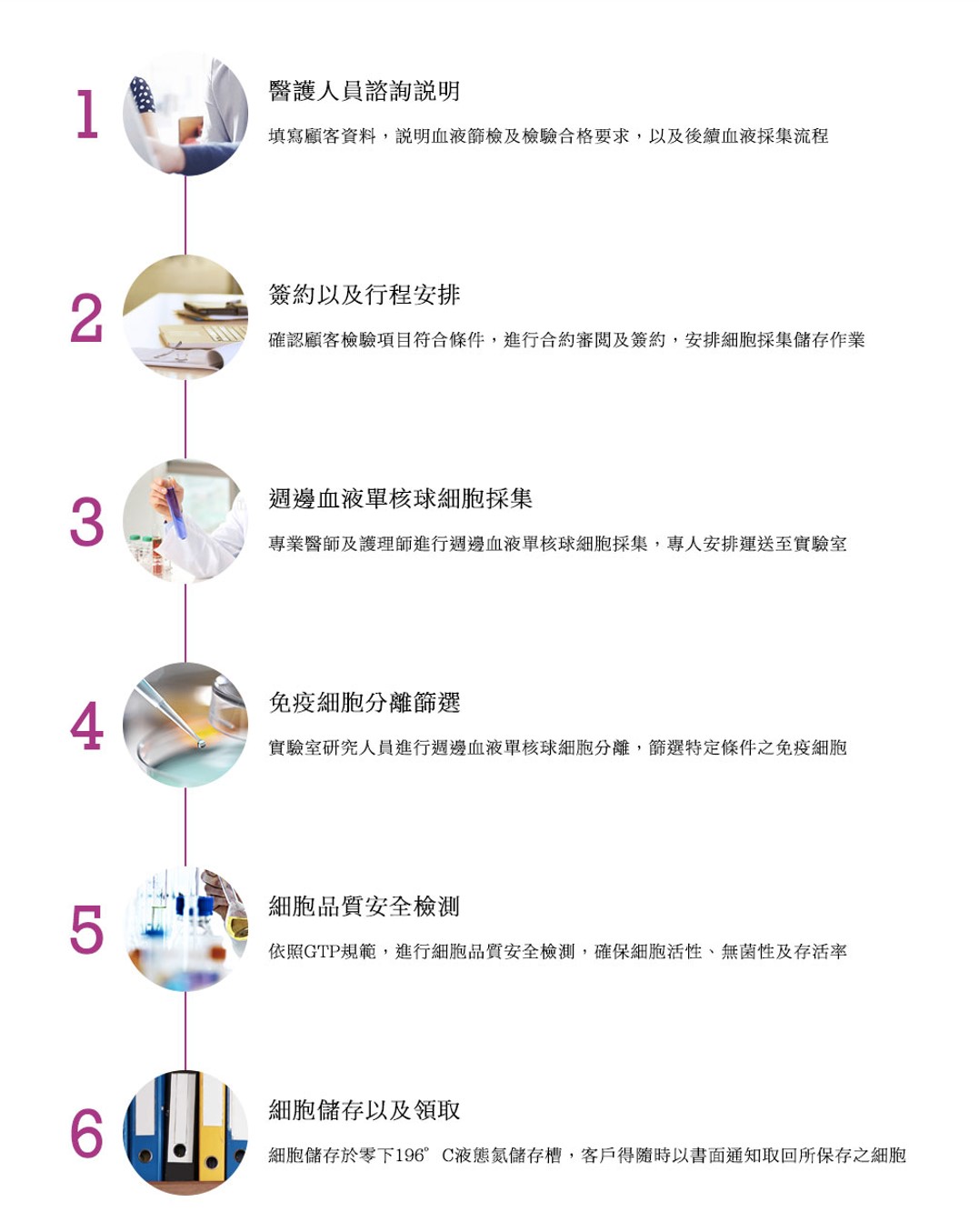Cell storage process

Cell storage process

Several kinds of immunocyte in the human blood have their own responsibility, for example, red blood cells carry oxygen, platelets work to clot blood, blood plasmas transport nutrients, wastes and regulate physiological condition as well as white blood cells fight against diseases. Those immunocyte travel and can be seen all over the human body via our circulatory system, they are responsible for logistics and defense etc. to maintain a human life. There are 3 common types of Immunocyte as below:

Around 60% ~ 70% of white cell is neutrophil, it usually moves first to where is affected by bacterial or fungal infection due to chemotaxis. It often effects acute inflammation after phagocytosing small amount of pathogens. Stopping renew itself lysosomes causes die and becoming purulent.

Around 0.5% ~ 5% of white cell is eosinophil, it has less capability compared to neutrophil to phagocytose the pathogens. Its function is to regulate allergy and resist parasites.

Less than 1% of white cell is eosinophil, it is similar to eosinophil doing resisting parasites, besides, it plays an important role in resisting inflammatory and allergy by not just consisting of the vasodilator “histamine” which increases blood flow to tissues but also the anticoagulant “heparin” which prevents blood from clotting blood quickly.

A type of lymphocytes, it is differentiated from thymus and becoming mature before transferring to lymphoid. By functions, 4 categories of Helper, Regulatory, Memory and Killer by different functions are majorly listed. It is kid of cell immunity of adaptive immunity

A type of lymphocytes, it becomes mature in the human bone. When antigen exists it starts to differentiate into plasma cells to release antibody. It is kind of humoral immunity of adaptive immunity.

A type of lymphocytes, it is a non-specific congenital immunity, when a human is likely be getting infected by virus or cancer cell exists it can speedily release kinds of cytotoxin, such as perforin to lead those virus or cells to death.

Around 3% ~ 8% of white cell is monocyte, it is the largest volume of white cells. It acts not just as neutrophil to phagocytose the pathogen but also is able to renew itself lysosome and after metabolized to bring the pathogen debris to T cells, which can specifically identify and kill the pathogen. Successfully bridging the innate and adaptive immunity allows mononuclear migrates from blood to tissues and differentiate into Macrophage or Dendritic Cells.

The most efficient phagocytosis cells, it stays in tissue and dis able to phagocytose the dead cells, cells decries or pathogens, their lysosome can simultaneously digest more than a hundred bacteria, after metabolized bring the pathogen debris to T cells and activate lymphocytes or other immune cells to help to speed up the response time to pathogens.

Originated in mononuclear, they are named because of its shape. well known for the most efficient antigen presenting ability. They can be seen at skin, lung, intestine, visualized inner of tissues or
Immature blood. After being activated it moves to lymph nodes to interact with T Cells and B Cells to initiate adaptive immunity.